Even if a pet is even tempered and relaxed most of the time, a major change such as moving can temporarily change their personality. Try to minimize their exposure to the chaos of moving by planning for your pet before packing and moving day. And pay more attention to reassure them along the way.
Pets can sense when we are stressed. To minimize our pets stress we need to manage ours as well.
- Make a plan and stretch it out over several days.
- Take breaks from packing to allow pets to continue with their daily routine and to be shown some TLC.
“From your pet’s perspective, moving day is filled with strange noises, unfamiliar voices and some commotion,” Ms. Salerno said.
Cats and dogs
Taking small steps is the key. Introduce your pet gradually to their new home. Make sure they have a safe space at every point.
-
Prepare an “overnight bag” for your pet which contains:

-
Food and water bowl
-
Waste bags or kitty litter and box
-
Favorite toys or blanket
-
Grooming tools
-
Contact your vet to bring your pet’s records with you. Ask if they have a recommendation for a vet in your new area.

-
Keep them away from the chaos during packing and moving day.
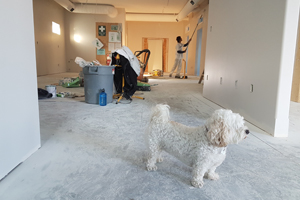
The flurry of activity could cause them to get worked up, or even panic and escape out the front door. 1
It is best to:
-
Leave them with a friend
-
Place them in a kennel for the day (they will be happier and so will you)

Otherwise:
-
Leave them in a room, that you will pack up last
-
Get them used to a carrier or crate for moving day

-Place their food inside an open crate
-Eventually have them eat their meals in a closed crate
-Carry your pet around the house in the carrier or crate
-Take them on small car rides with the carrier
-Reward your pet at the end of “crate time”
-
Place the carrier or crate in a quiet area of your home while packing
-
Make sure they have enough food and water
-
Walk and feed them at their regular time (keep to their schedule)

-
Check on them regularly
-
Avoid leaving them in the car
-
Ensure they are in a safe place with even temperature
Ex: our cat knows when we are packing and going away on holidays. She will lay on our cloths in our suitcases. She could very easily hide in a moving box. Confining a pet while packing is not only for our sanity but for their protection as well.
Driving or Flying?
Transporting your pet can be done by driving but moving long distances may require flying.
What you need to know about taking a pet by air:
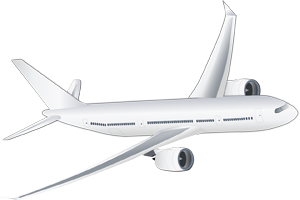
Rules and regulations vary by airline.
- Small dogs and cats may ride in a carrier under your seat, as carry-on, as long as you pay a fee.
- Large dogs fly in cargo which is a pressurized and may be a temperature-controlled space under the seats. However not all cargo areas are heated or airconditioned. Therefore it is best to plan your move for the spring or fall for your pet’s comfort in the cargo area. The carrier or crate size guidelines vary by airline. Please check before buying a carrier.
- Medicating your pet is not recommended if they will be in the cargo area since you cannot monitor them
- You will need to bring proof of recent vaccinations to show the airline.
-
Take your pet to your new home in your own vehicle
![]()

- Cats or small dogs can be transported in a carrier which is secured with a seat belt
- Placing a small blanket over the carrier may calm your pet during the car ride which will shield them from the changing view
- Larger dogs can be placed in the back of the car. Putting the seat down may be necessary.
- Bring portable toys, a no-spill water bowl and seat cover to protect your uphostery1
- If your pet gets car sick, feed them several hours before leaving and wait until after you arrive to feed them again.1
- Some hotels allow dogs but will charge a pet cleaning fee
-
Avoid letting them out of the vehicle or carrier until you have reached your final destination (depending on the length of the trip)
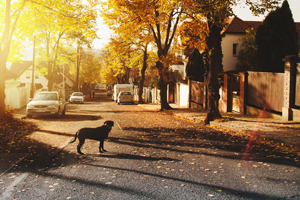
- The worl is full of new smells; if unrestrained your pet can easily bolt and get lost in unfamiliar surroundings
- If a walk is necessarily make certain your pet is leashed or harnessed
- It would be very difficult to convince your stressed cat to re-enter the carrier if let out
-
Move your home before your pet
-
Set up as much of your new home as possible before bringing your pet
-
Or at least, set up one quiet room, away from the noise and chaos, which your pet will be introduced to first (make sure it has a door to confine them)
-
When you reach your destination take small steps to help your pet get comfortable.
-
For your pet, it is a whole new world. There are sights, smells and sounds to discover.1
- Leave your pet in the carrier in the new room
- Open the carrier and allow them to exit the carrier in their own time
- Set up the litter box
-
Let them explore this new room containing familiar objects
-
Give them their toys and blankets as soon as possible
-
Allow them to get comfortable with this room
-
Gradually introduce them to other rooms, while keeping some doors shut
-
Gradually move the litter box (a foot at a time) until it reaches its final destination
-
Your goal is to let them feel at home, somewhere they want to stay
-
Take this opportunity to make your cat an indoor cat. Or at least, resist letting your cat outside until they are comfortable with your new home.
-
Introduce your dog to the area with walks, allowing them to stop and sniff around the neighborhood.1
![]()
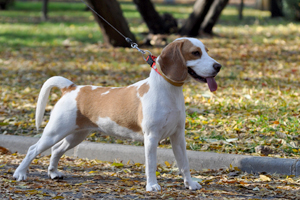
- For anxious pets, keep them in their crates when you leave the house until you are comfortable allowing them to roam.1
-
Keep your pet on a leash (dogs and cats), while outside, until they recognize their new boundaries
-
Pet proof your new home
-
Tuck away electrical cords
-
Plug up nooks and crannies where they could get stuck
-
Make sure all windows screens are secure
-
Remove poisonous houseplants
-
Check your home for pest-control poison traps and remove them
-
Update your pet’s tags or microchip information as soon as possible

Fish

Fish are easily stressed. Therefore, moving can be traumatizing if not fatal.
Fish can be transported in bags filled with their old tank water for small distances.
If moving long distances, they may need to be given to a friend and new fish purchased for your new home.
Guinea Pigs
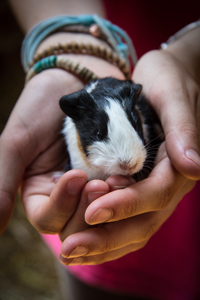
Guinea pics suffer from change and excessive movements.
Take care to move them in a warm and comfortable small carrier.
Birds

Birds can also be affected by change.
Transport them in their cages, otherwise they can easily fly away if stressed.
Do not let them out until you have reached your destination.
Be their best friend and place them in a cage, even if your bird baulks at the insult. It is in their best interest.
Sources:



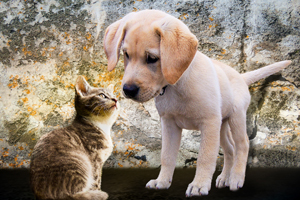
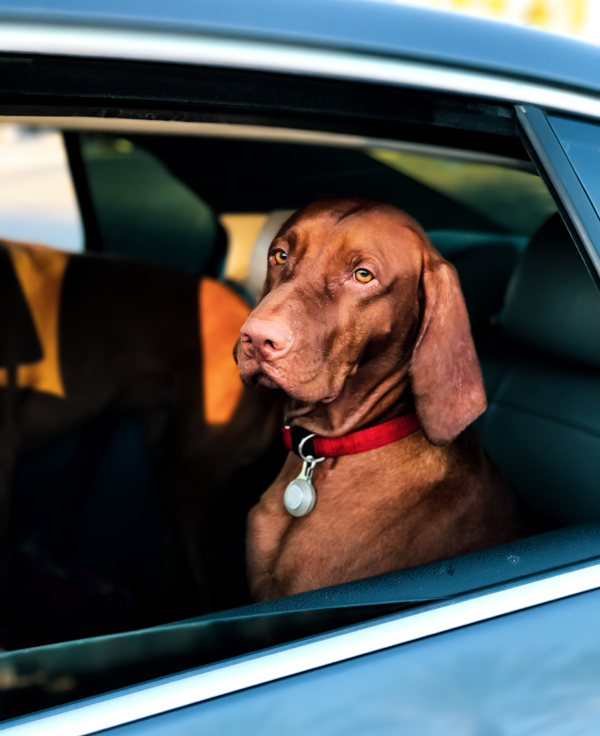
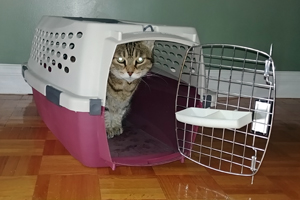
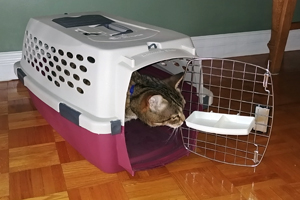


Post a comment